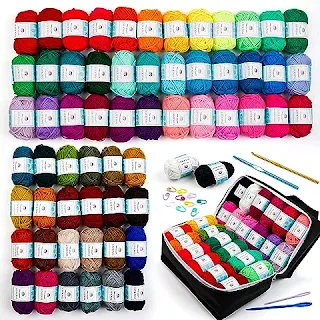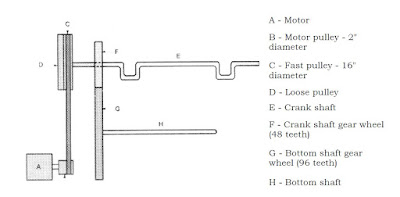The Art of the Bunch of Yarn: A Comprehensive Guide for Crafters
The Art of the Yarn Bunch: A Comprehensive Guide for Crafters
In the realm of knitting, crocheting, and fiber arts, a "bunch of yarn" is an essential component that fuels creativity and brings projects to life. This humble phrase encompasses a world of possibilities, each stitch intricately woven with passion and skill. In this comprehensive guide, we'll delve into the complexities of a group of yarns, unraveling its significance, terminology, and practical applications in the vibrant crafting community.
What is a Bunch of Yarn?
A bunch of yarn, often referred to as a skein or hank, is a continuous length of yarn that is neatly wound into a coiled or twisted configuration. This arrangement not only keeps the yarn organized but also serves as a convenient unit for measuring and distributing the fiber during the knitting or crocheting process.
Bunch of Yarn Synonyms
While the term "bunch of yarn" is widely recognized, there are several synonyms commonly used within the crafting community:
- Skein
- Hank
- Ball
- Cake
- Twist
These terms may vary depending on regional or cultural contexts, but they all refer to the same concept – a bundled length of yarn ready for use.
The Origin and History of Yarn Bunches
The practice of bundling yarn into skeins or hanks dates back centuries, with evidence of its use in ancient civilizations like Egypt, Greece, and Rome. This method not only facilitated the transportation and storage of yarn but also played a crucial role in the development of textile arts and crafts.
As knitting and crocheting gained popularity across various cultures, the need for organized and manageable yarn bunches became increasingly important. Over time, different techniques for winding and bundling yarn emerged, each tailored to the specific fibers and project requirements.
The Purpose and Significance of Yarn Bunches
Yarn bunches serve several vital purposes in the world of fiber arts:
1. **Organization**: Bundling yarn into skeins or hanks keeps the strands organized and tangle-free, making it easier to work with during knitting or crocheting projects.
2. **Measurement**: The majority of yarn bunches come with labels containing details regarding fiber content, weight, and yardage, allowing crafters to accurately calculate the required amount of yarn for their projects.
3. **Portability**: Yarn bunches are compact and easy to transport, making them ideal for on-the-go crafting or sharing with fellow enthusiasts.
4. **Aesthetics**: Neatly wound yarn bunches can be visually appealing, adding a touch of artistry to the crafting process and final products.
Types of Yarn Bunches
Within the fiber arts community, there are several types of yarn bunches, each with its own unique characteristics and applications:
Yarn Bunch Terminology and Measurements
In the crafting community, there exist various terms and measurements linked with yarn bunches, all of which are crucial for precise planning and execution of projects:
Yarn Bunch Calculations and Project Planning
When embarking on a knitting or crocheting project, accurate yarn bunch calculations are crucial for successful completion. Here are some essential considerations:
1. **Yardage Requirements**: Most patterns will specify the approximate yardage needed for the project, based on the desired size and gauge. Comparing this information with the yardage provided on the yarn bunch label will help determine the required number of bunches.
2. **Gauge Swatches**: Creating a gauge swatch with the intended yarn and needles/hooks is recommended to ensure accurate stitch count and tension, which can influence the overall yardage requirements.
3. **Fiber Properties**: Different fiber types may have varying levels of stretchiness, drape, or shrinkage, affecting the final measurements of the finished project and the amount of yarn needed.
4. **Colorwork and Patterns**: Projects involving multiple colors, intricate stitch patterns, or textured designs may require additional yarn to account for potential variances in tension or technique.
By carefully considering these factors, crafters can accurately plan their projects and ensure they have sufficient yarn bunches on hand, minimizing the risk of running out or having excess material.
Caring for Yarn Bunches
Maintaining proper care and storage of yarn bunches is vital to uphold their quality and ensure they're readily available for use whenever inspiration strikes. Here are some tips for preserving your yarn bunches:
1. **Temperature and Humidity Control**:By storing yarn bunches in a cool, dry area and shielding them from direct sunlight or excess moisture, you can prevent damage or discoloration and ensure they remain in optimal condition for your crafting projects.
2. **Pest Prevention**: Use airtight containers or cedar chips to deter pests that may be attracted to natural fibers.
3. **Tangle Prevention**: Avoid unnecessary handling or rough treatment of yarn bunches, as this can lead to tangles or distortion of the winding.
4. **Label Preservation**: Keep the original labels or tags attached to the yarn bunches, as they provide valuable information about fiber content, yardage, and care instructions.
Adhering to these straightforward guidelines will keep your yarn bunches in pristine condition, prepared to be crafted into beautiful and enduring creations.
Conclusion
A bunch of yarn is more than just a bundle of fibers; it represents the boundless possibilities of creativity and the joy of crafting. Whether you're a seasoned knitter, an avid crocheter, or a budding fiber artist, understanding the significance and nuances of yarn bunches will enhance your overall crafting experience. Embrace the art of the yarn bunch, and let your imagination soar as you weave together masterpieces stitch by stitch.



Comments
Post a Comment